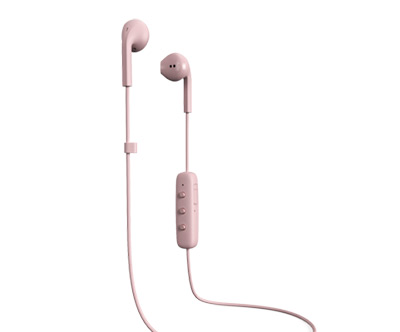 Afrikaans
Afrikaans  Albanian
Albanian  Amharic
Amharic  Arabic
Arabic  Armenian
Armenian  Azerbaijani
Azerbaijani  Basque
Basque  Belarusian
Belarusian  Bengali
Bengali  Bosnian
Bosnian  Bulgarian
Bulgarian  Catalan
Catalan  Cebuano
Cebuano  Corsican
Corsican  Croatian
Croatian  Czech
Czech  Danish
Danish  Dutch
Dutch  English
English  Esperanto
Esperanto  Estonian
Estonian  Finnish
Finnish  French
French  Frisian
Frisian  Galician
Galician  Georgian
Georgian  German
German  Greek
Greek  Gujarati
Gujarati  Haitian Creole
Haitian Creole  hausa
hausa  hawaiian
hawaiian  Hebrew
Hebrew  Hindi
Hindi  Miao
Miao  Hungarian
Hungarian  Icelandic
Icelandic  igbo
igbo  Indonesian
Indonesian  irish
irish  Italian
Italian  Japanese
Japanese  Javanese
Javanese  Kannada
Kannada  kazakh
kazakh  Khmer
Khmer  Rwandese
Rwandese  Korean
Korean  Kurdish
Kurdish  Kyrgyz
Kyrgyz  Lao
Lao  Latin
Latin  Latvian
Latvian  Lithuanian
Lithuanian  Luxembourgish
Luxembourgish  Macedonian
Macedonian  Malgashi
Malgashi  Malay
Malay  Malayalam
Malayalam  Maltese
Maltese  Maori
Maori  Marathi
Marathi  Mongolian
Mongolian  Myanmar
Myanmar  Nepali
Nepali  Norwegian
Norwegian  Norwegian
Norwegian  Occitan
Occitan  Pashto
Pashto  Persian
Persian  Polish
Polish  Portuguese
Portuguese  Punjabi
Punjabi  Romanian
Romanian  Russian
Russian  Samoan
Samoan  Scottish Gaelic
Scottish Gaelic  Serbian
Serbian  Sesotho
Sesotho  Shona
Shona  Sindhi
Sindhi  Sinhala
Sinhala  Slovak
Slovak  Slovenian
Slovenian  Somali
Somali  Spanish
Spanish  Sundanese
Sundanese  Swahili
Swahili  Swedish
Swedish  Tagalog
Tagalog  Tajik
Tajik  Tamil
Tamil  Tatar
Tatar  Telugu
Telugu  Thai
Thai  Turkish
Turkish  Turkmen
Turkmen  Ukrainian
Ukrainian  Urdu
Urdu  Uighur
Uighur  Uzbek
Uzbek  Vietnamese
Vietnamese  Welsh
Welsh  Bantu
Bantu  Yiddish
Yiddish  Yoruba
Yoruba  Zulu
Zulu head pulley tail pulley for belt conveyor
Understanding Head and Tail Pulleys in Belt Conveyors
Belt conveyors play a crucial role in various industries, effectively transporting materials from one point to another. Two key components of these conveyor systems are the head and tail pulleys. Understanding their functions, designs, and maintenance can lead to enhanced efficiency and operational longevity of the conveyor system.
What are Head and Tail Pulleys?
In a belt conveyor system, the head pulley is located at the discharge end, where the material is loaded onto the belt and propelled forward. Meanwhile, the tail pulley is situated at the loading side, supporting the return portion of the belt after it has moved the materials away. Together, these pulleys work in tandem to facilitate continuous movement of the belt and the material it carries.
The Function of Head Pulleys
The head pulley is critical for the effective operation of a belt conveyor. Its primary functions include
1. Material Discharge The head pulley ensures that the materials being transported reach their destination. As the belt moves around the head pulley, the materials are lifted and dropped onto the designated area.
2. Belt Tensioning This pulley helps to maintain the necessary tension in the belt, preventing slack and ensuring smooth operation. Proper tension is essential for minimizing wear and tear on the belt and associated components.
3. Drive Mechanism The head pulley is often connected to a motor that drives the conveyor belt. This can involve direct coupling or the use of a gearbox to provide the desired speed and torque.
The Function of Tail Pulleys
head pulley tail pulley for belt conveyor

While the head pulley is primarily responsible for discharging materials, the tail pulley also has significant roles
1. Support for the Return Belt The tail pulley is essential for the return segment of the belt. It supports the belt as it returns to the loading area, ensuring that it remains aligned and functional.
2. Tension Control The tail pulley helps in maintaining the proper tension throughout the conveyor system. It can be equipped with devices to adjust tension dynamically, thus preventing slippage and ensuring efficient operation.
3. Guidance and Alignment Tail pulleys help guide the belt, preventing it from misalignment that can lead to inefficiency or damage. Properly aligned pulleys ensure the belt wears evenly and extends its life.
4. Safety Features Many tail pulleys incorporate safety measures, such as guards, to protect operators and maintenance personnel from accidents caused by moving components.
Maintenance and Upkeep
To ensure the longevity and functionality of both head and tail pulleys, regular maintenance is essential. This includes
- Visual Inspections Regularly checking for wear and signs of damage or misalignment can preempt larger issues. - Cleaning Keeping both pulleys clean from material buildup will prevent slippage and maintain engagement with the belt. - Lubrication Moving parts need to be adequately lubricated to prevent friction wear, especially in the bearings associated with the pulleys. - Belt Alignment Checks Regular checks on the alignment of the belt with the head and tail pulleys can help maintain proper function and extend the lifespan of the conveyor system.
Conclusion
Head and tail pulleys are integral components of belt conveyors, each serving distinct yet interrelated functions that are fundamental to the system's operation. Their roles in material discharge, tension maintenance, and alignment highlight the importance of these pulleys in ensuring efficient and safe material handling. By understanding these components and committing to regular maintenance, businesses can enhance productivity, reduce downtime, and extend the lifespan of their conveyor systems. Proper attention to head and tail pulleys will, ultimately, contribute to a more efficient material handling process, securing a competitive advantage in today's fast-paced industrial environment.
-
Revolutionizing Conveyor Reliability with Advanced Rubber Lagging PulleysNewsJul.22,2025
-
Powering Precision and Durability with Expert Manufacturers of Conveyor ComponentsNewsJul.22,2025
-
Optimizing Conveyor Systems with Advanced Conveyor AccessoriesNewsJul.22,2025
-
Maximize Conveyor Efficiency with Quality Conveyor Idler PulleysNewsJul.22,2025
-
Future-Proof Your Conveyor System with High-Performance Polyurethane RollerNewsJul.22,2025
-
Driving Efficiency Forward with Quality Idlers and RollersNewsJul.22,2025





























